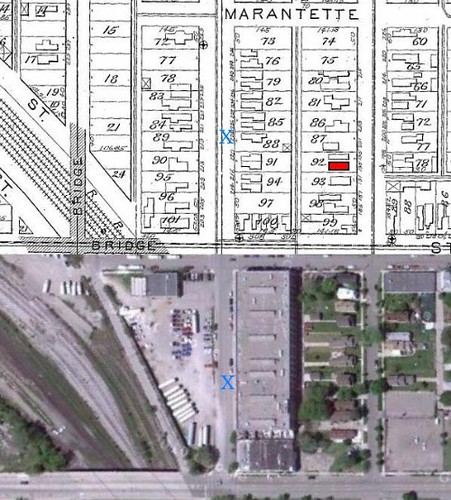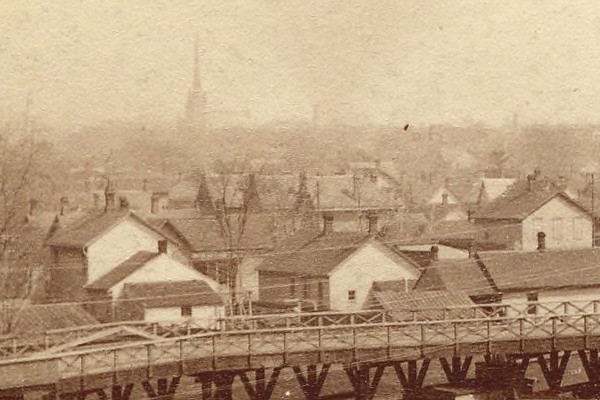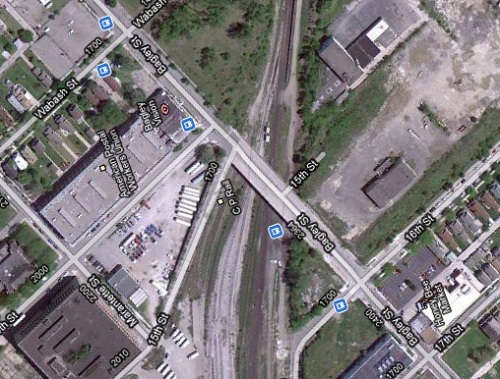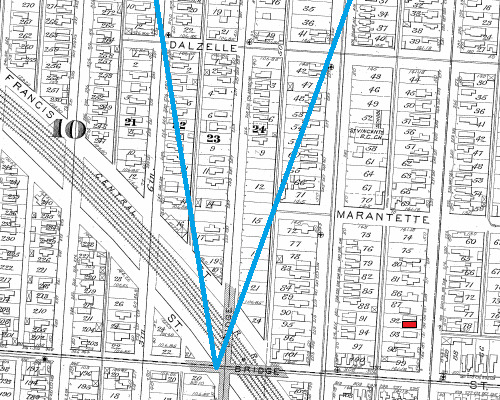In a
previous post, I stated that a bricklayer named Joseph S. Greer rented the Bechstein house, where I live, in 1893. That is not correct. The city directory for that year states that "Geer, Joseph W., bricklayer" lived at 195 Wabash. Based on the first name and occupation, I assumed this was a Joseph Greer who appeared in a later census record. However, it was the first name that was incorrect--that right man is John W. Geer. I found this out from an old
Detroit Free Press article about a sensational murder trial that occurred at the time Geer lived in my house.
* * * * *
On the evening of November 18, 1892, a twenty-year-old pharmacist named Fred H. Kelly went to work at J. W. Caldwell's drug store at the corner of Grand River Avenue and High Street (now the I-75 service drive). He would sleep in the store and be on call to fill prescriptions throughout the night. Early the next morning the door was found unlocked and Kelly was discovered in the basement, dead from a 32 caliber bullet to the back of the head.

242 Grand River Avenue circa 1910
Former site of J.W. Caldwell's Drug Store
Courtesy of the Burton Historical Collection, Detroit Public Library
Detectives visited Frank L. Hayes, another young man who recently held the same position as Kelly but was fired for bringing his girlfriend with him on the night shift. He was also suspected in a robbery of the store immediately after his termination since he knew the combination to the safe, but was never charged. When the detectives interviewed Hayes, he had a packed suitcase that contained a coat, gloves, and revolver that belonged to the murder victim. He was later charged with the crime. He first claimed that the articles were his and that he hadn't been to Caldwell's drug store in weeks, but later changed his story to say that he had been there that evening and that Kelly had loaned him the items.
The following appeared in the
Detroit Free Press' coverage of the murder trial the following June:
A SUSPICIOUS CHARACTER.
—————————
Testimony of Watchman John Geer.
John Geer, 195 Wabash avenue, a watchman for Eberts Bros., about a block from Caldwell's store. He remembered November 19.
"Did you see anyone pass Caldwell' drug store?"
"Several passed."
"Did anyone attract your attention?"
"Yes, sir."
"At what time?"
"At my 2 o'clock pull. A man came along in the vicinity of Caldwell' store, and when he saw me he quickened his steps. He crossed to the other side of the street, stood, and then walked quickly to Fourth street and stopped. His movements had made me suspicious, and I came outside to look after him. After standing at Fourth street he walked away. When I was making my 3 o'clock pull I had forgotten about the affair, and then I heard afterward of the murder."
"What did this man you saw look like?"
"He was about medium size, slight build, light overcoat and Derby hat."
"Did you ever see defendant, Hayes?"
"I saw him in Caldwell's store."
"What would you say as to Hayes being about the size of the man you saw?" asked Mr. Hunt.
"He resembled him very much in appearance and dress," aid the witness.
When this evidence was being given a pin might have been heard fall.
(Detroit Free Press, 16 Jun 1863)
Although the evidence was only circumstantial and no motive ever firmly established, Hayes was ultimately found guilty and sentenced to life in prison.
The building where Geer's employer was situated still stands today at 828 West Fisher Freeway and houses Senate Antiques. This is the vicinity mentioned in the testimony given above, as it appeared in 1885 and a recent satellite image:

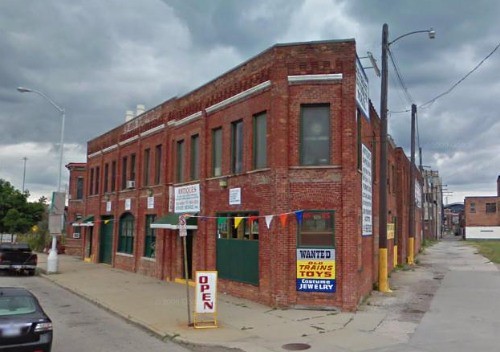
The site of Eberts Bros. Roofing today (Source)
John W. Geer was born in Howell, Michigan in 1861. He enlisted with the U.S. Army in 1882 and served in the 1st Cavalry Regiment, Company L until 1887. Soon afterward he married a woman named Martha Stokes and moved to Corktown. They were 32 and 30, respectively, when they rented the Bechstein house in 1893. They had two children at the time: Edward William, age 4, and Susan Mary, born May 23, 1892.
Searching for Geer's name in the historical
Free Press archives brings up other unusual stories, including this sad item under "Sayings and Doings" on July 26, 1892:
John M. [sic] Geer, watchman for Eberts Bros.' roofing works, High and Fourth streets, was obliged to shoot his own dog yesterday morning, the animal suddenly exhibiting violent hydrophobia.
Hydrophobia, of course, is a symptom of rabies, which has no cure.
Geer had several jobs over the years in addition to watchman and bricklayer, including gas fitter, bartender, and even restaurant owner. In June of 1905, these notices appeared in the
Detroit Free Press:

(4 June 1905)

(9 June 1905)
I don't know whether Geer ever came back home after that. What I do know is that all of the subsequent records show his wife and children living without him. He later shows up in homes for disabled soldiers throughout the Midwest. One of his sons applied for a passport in 1920 and listed "Unknown" for his father's current location. But there must have been limited contact between them, however, since Geer correctly listed the current address of his wife in the papers for his 1924 stay in a home for disabled soldiers in Ohio. John Geer died in Hines, Illinois in 1939.




